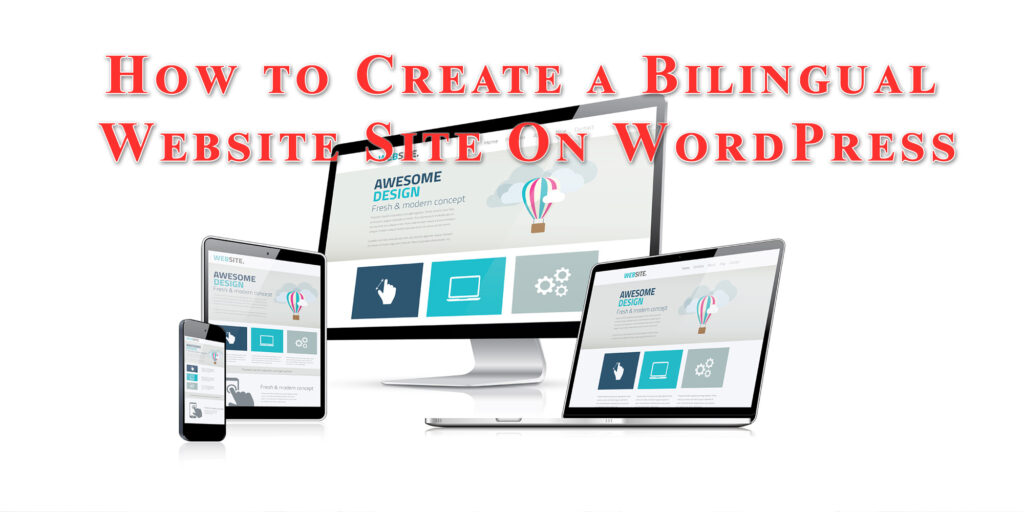In today’s globalized world, creating a website that caters to speakers of multiple languages is not just an option but a necessity for many businesses and content creators. WordPress, being one of the most popular content management systems, offers various ways to build a bilingual website. This article delves into three major strategies for implementing bilingual content on WordPress websites, outlining their advantages, challenges, and impact on search engine optimization (SEO).
1. Developing Individual Pages for Each Language
The first approach involves creating separate pages for each language and linking them together. This method requires designing a page for one language and then creating an equivalent page in the other language. Interlinking these pages allows users to switch between languages easily, usually through a menu option or button.
Pros:
- User Experience: This method can offer a seamless experience for users since they can choose their preferred language and navigate the site accordingly.
- Customization: It allows for high levels of customization on each page, accommodating language-specific nuances and cultural differences.
Cons:
- Maintenance: The main drawback of this approach is the high maintenance effort. Any change made on one page needs to be mirrored on its counterpart, making the process time-consuming and prone to inconsistencies.
- Increased Workload: Developing and managing content for two sets of pages can significantly increase the workload, especially for larger sites.
2. Incorporating Both Languages on a Single Page
Another strategy is to develop a single page that includes content in both languages. This could mean having sections on the page dedicated to each language or using a toggle mechanism to switch between languages without changing the page.
Pros:
- Simplicity: This approach simplifies maintenance since any update only needs to be applied once, making it easier to keep the content synchronized across languages.
- Cost-effective: It is more time and cost-effective, particularly for smaller websites or those with limited content.
Cons:
- User Experience: It can potentially clutter the page and overwhelm users, especially if not implemented with a clean, intuitive design.
- Limited SEO Benefits: Since the content is mixed, it might be harder for search engines to identify and index the page correctly for specific language queries.
3. Using Auto-Translate Plugins
The third option is to use auto-translate plugins that dynamically translate the content based on the user’s language preference. These plugins detect the user’s browser language or allow the user to select their preferred language, automatically translating the content on the fly.
Pros:
- Ease of Implementation: Auto-translate plugins are easy to install and configure, requiring minimal effort compared to the other two approaches.
- Instant Translation: They provide instant translation, making your website accessible to a wider audience without the need for manual translation.
Cons:
- SEO Impact: The biggest disadvantage of auto-translate plugins is their negative impact on SEO. Since the translation occurs in real time and is not indexed by search engines, only the original language content is searchable. This can significantly limit the visibility of your site in search results for the translated language.
- Quality of Translation: The quality of translation may not always be accurate, as it relies on machine translation, which can struggle with nuances and context.

4. Best Practices for Building a Bilingual Website on WordPress
Regardless of the method chosen, there are several best practices to ensure the success of your dual-language WordPress site:
- SEO Considerations: For approaches that have content in both languages indexed by search engines (like separate pages or integrated bilingual content), ensure that you use hreflang tags. These tags tell search engines about the language and geographical targeting of a page, improving your SEO performance.
- User Interface Design: Implement a clear and intuitive language switcher on your site. It should be easily accessible, allowing users to switch languages with minimal effort.
- Content Strategy: Maintain consistency in the quality and quantity of content across languages. This includes not only textual content but also multimedia elements like images and videos, which should be culturally and linguistically appropriate.
- Performance and Accessibility: Ensure that adding another language does not negatively impact your site’s loading times and that your site remains accessible to all users, including those using screen readers or other assistive technologies.
- Legal and Cultural Considerations: Be aware of the legal requirements and cultural sensitivities related to content in different languages, especially when operating in or targeting specific countries.
5. Choose The Right Way To Build A Dual-language Website
Creating a dual-language website on WordPress can be approached in several ways, each with its own set of advantages and challenges. Whether you choose to develop separate pages for each language, incorporate both languages on a single page, or use auto-translate plugins, it’s essential to consider the impact on user experience, maintenance, and SEO. By following best practices and carefully planning your bilingual website strategy, you can effectively cater to a diverse audience, expanding your reach and enhancing engagement across different language speakers.
For more information, visit Bel Oak Marketing.





